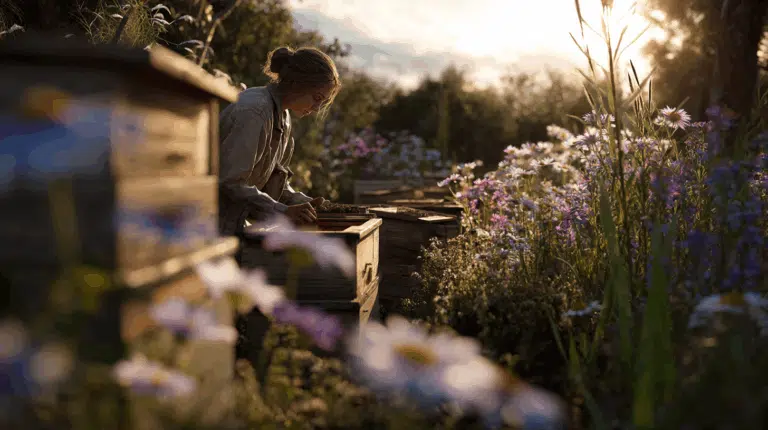Celosia is een opvallende, eenjarige bloem met fluweelachtige, felgekleurde bloemen in unieke vormen, zoals pluimen en kammen. Ideaal als snijbloem, voegt langdurig kleur en textuur toe aan het boeket.
Met Celosia zaden van EasySeeds.eu haal je opvallende, sierlijke bloemen in je tuin of border die perfect geschikt zijn als snijbloemen voor boeketten en bloemstukken. Celosia uit zaad zaaien geeft tuiniers de vrijheid om borders, perken en potten te vullen met uitbundige bloemen in felle kleuren en unieke vormen. Ook bekend als Luchtkool of Pluimcelosia, onderscheidt Celosia zich door zijn compacte bloemaren en opvallende textuur, waardoor ze een spectaculair accent vormen in boeketten en tuinen.
Unieke kleuren en structuren
Celosia produceert bloemen in levendige tinten zoals rood, roze, oranje, geel en paars. De karakteristieke pluim- of kamvormige bloemaren geven een opvallend effect in borders en boeketten.
Langdurige bloei
Celosia bloeit van midden zomer tot de vroege herfst en biedt daardoor langdurige kleur en decoratie in je tuin en snijbloemenboeketten.
Onderhoudsvriendelijk en veelzijdig
Deze snijbloemen zijn eenvoudig te kweken, vergen weinig onderhoud en passen zowel in borders, potten als bakken. Ze zijn geschikt voor zowel beginnende als ervaren tuiniers.
Bijvriendelijk en ecologisch
De bloemen trekken bijen en vlinders aan, wat bijdraagt aan biodiversiteit en een gezonde tuinomgeving.
Snijbloemen voor boeketten – De stevige bloemaren en opvallende kleuren maken Celosia ideaal voor boeketten en bloemstukken binnenshuis.
Borders & perken – Voeg structuur, hoogte en levendige kleuren toe aan je borders met deze bijzondere snijbloemen.
Potten en bakken – Compacte Celosia-soorten zijn uitstekend geschikt voor potten, balkonbakken en terrassen.
Combinaties met andere snijbloemen – Mix Celosia met Zinnia, Tagetes of Verbena voor een speels en kleurrijk effect.
Zaaitijd – Zaai binnenshuis van februari tot april of direct buiten na de laatste vorst voor een optimale start.
Grond & standplaats – Gebruik goed doorlatende zaaigrond en kies een zonnige locatie voor maximale groei en bloei.
Verzorging – Houd de grond vochtig tijdens kiemen en eerste groeifase; geef regelmatig voeding om sterke en gezonde planten te stimuleren.
Uitharden – Laat jonge planten geleidelijk wennen aan buitenomstandigheden voordat ze definitief uitgeplant worden.
Onderhoud – Verwijder eventueel verwelkte bloemen (deadheading) om de bloei te verlengen en de planten gezond te houden.
Bij EasySeeds.eu vind je een uitgebreid assortiment Celosia zaden, geselecteerd op kiemkracht, kleurintensiteit en bloei-intensiteit. Of je nu borders wilt vullen, potten wilt verfraaien of zelf boeketten wilt samenstellen – onze Celosia zaden helpen je tuin en boeketten elk seizoen tot leven te brengen.
🌾 Ontdek nu ons assortiment en bestel eenvoudig online – Celosia zaden kopen doe je bij EasySeeds.eu!

Celosia argentea var. cristata (Hanen kam / Cockscomb): Heeft hersenachtige, gekroesde bloeiwijzen die dicht en fluweelachtig zijn, waardoor ze opvallen in bloemstukken.
Celosia argentea var. plumosa (Pluim-celosia): Toont gevederde, pluimachtige bloemen die hoogte en textuur toevoegen aan boeketten en arrangementen.
Celosia argentea var. spicata (Aar-celosia of Tarwe-celosia): Lijkt op tarwearen en geeft een meer ingetogen en elegante uitstraling aan verfijnde bloemontwerpen.
Klimaat: Celosia gedijt in warme klimaten en is gevoelig voor vorst. Zorg voor consequent warme temperaturen voor een optimale groei.
Bodem: Voorkeur voor goed doorlatende grond met een pH tussen 6,0 en 7,0. Het verrijken van de bodem met organisch materiaal verbetert de structuur en vruchtbaarheid.
Zonlicht: Celosia heeft volle zon nodig om haar levendige kleuren en sterke groei te ontwikkelen. Zorg dat de planten dagelijks minstens 6–8 uur direct zonlicht ontvangen.
Zaai binnen voor vanaf maart, in een warme, lichte omgeving (ongeveer 20°C). Verspeen de plantjes en plant ze buiten uit na de laatste vorst. In theorie kun je ook direkt buiten zaaien, maar, maar voorkiemen binnen geeft een veel beter resultaat in ons klimaat.
Over het algemeen is ze sterk, maar kan gevoelig zijn voor bladluis of schimmel bij te veel vocht.
Zeker! Celosia behoudt haar kleur en vorm uitstekend bij het drogen. Hang de bloemen ondersteboven op een droge, donkere plaats. Hang de stelen ondersteboven in kleine bosjes op een warme, donkere plek. Na 2–3 weken zijn ze droog en klaar voor gebruik.